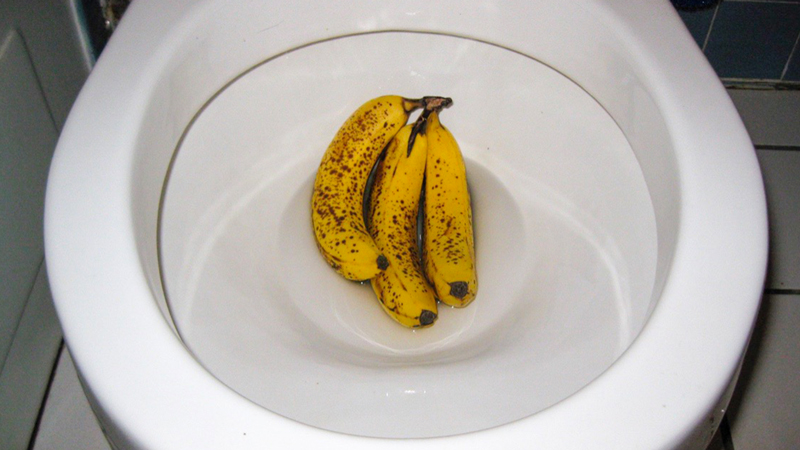Listed here in the next paragraphs yow will discover a bunch of exceptional advice when it comes to What Can Happen If You Flush Food Down the Toilet?.

Intro
Many individuals are typically faced with the issue of what to do with food waste, especially when it pertains to leftovers or scraps. One usual concern that develops is whether it's alright to flush food down the commode. In this write-up, we'll look into the reasons that individuals might consider purging food, the repercussions of doing so, and alternative techniques for proper disposal.
Reasons that people may think about flushing food
Absence of recognition
Some individuals might not understand the prospective damage caused by flushing food down the commode. They might incorrectly believe that it's a safe technique.
Comfort
Purging food down the commode may feel like a quick and simple solution to disposing of undesirable scraps, especially when there's no neighboring trash bin available.
Idleness
In many cases, individuals may just choose to flush food out of sheer negligence, without taking into consideration the effects of their actions.
Effects of flushing food down the commode
Environmental influence
Food waste that ends up in rivers can contribute to air pollution and damage aquatic communities. In addition, the water made use of to flush food can stress water sources.
Pipes issues
Purging food can lead to clogged pipelines and drains pipes, creating expensive plumbing fixings and troubles.
Types of food that must not be flushed
Fibrous foods
Foods with fibrous appearances such as celery or corn husks can obtain entangled in pipelines and create blockages.
Starchy foods
Starchy foods like pasta and rice can take in water and swell, leading to clogs in pipes.
Oils and fats
Greasy foods like bacon or food preparation oils need to never be flushed down the toilet as they can strengthen and create blockages.
Correct disposal approaches for food waste
Making use of a waste disposal unit
For homes outfitted with waste disposal unit, food scraps can be ground up and flushed with the pipes system. Nonetheless, not all foods appropriate for disposal in this fashion.
Recycling
Particular food packaging products can be reused, decreasing waste and decreasing environmental impact.
Composting
Composting is an environmentally friendly method to throw away food waste. Organic products can be composted and utilized to improve dirt for gardening.
The importance of proper waste management
Reducing ecological damage
Appropriate waste administration practices, such as composting and recycling, assistance lessen air pollution and maintain natural deposits for future generations.
Shielding plumbing systems
By preventing the method of flushing food down the commode, home owners can stop pricey pipes repair work and maintain the stability of their pipes systems.
Conclusion
To conclude, while it may be appealing to purge food down the toilet for benefit, it is very important to recognize the potential repercussions of this action. By adopting correct waste management methods and taking care of food waste sensibly, people can contribute to much healthier plumbing systems and a cleaner environment for all.
FLUSH FOOD DOWN THE TOILET?
FLUSHING FOOD CAN CAUSE BLOCKED DRAINS IN YOUR HOME
All of the plumbing fixtures in your home are connected to the same sewer pipe outside of your home. This outdoor sewer pipe is responsible for transporting all the wastewater from your home to the Council sewer mains. Even small pieces of food that go down the kitchen sink can cause problems for your sewer. It should therefore be obvious that flushing larger bits of food, such as meat, risks a clog in either the toilet itself or the sewer pipes. Flushing greasy food is even more problematic because oil coagulates when it cools, coating the interior lining of your pipes.
THE TOILET IS NOT A BIN
Food isn’t the only thing that people shouldn’t be flushing down the toilet. People use the toilet to dispose of all kinds of things such as tampons, makeup wipes, dental floss, kitty litter and even underwear. Water goes to great lengths to educate residents about the high costs and stress placed on wastewater treatment systems simply from people flushing the wrong stuff down the toilet. It costs taxpayers millions of dollars each year, and homeowners thousands in blocked drain repairs.
FLUSHING FOOD IS A WASTE OF WATER
Flushing food is a waste of our most precious resource - water. In June this year Level 1 water restrictions were introduced to protect water supply from drought conditions. Much of New South Wales continues to be affected by prolonged drought with recent figures revealing up to 97 per cent of the state remains in drought. Depending on whether you have a single or dual flush toilet, every single flush uses between five and 11 litres of water. In the current climate this is a huge amount of water to be wasting on flushing food that should be placed in the bin (or better yet, the compost).
https://www.jabplumbingsolutions.com.au/blog/can-you-flush-food-down-the-toilet

Hopefully you enjoyed our part about . Thanks a ton for finding the time to read through our blog. If you please take the opportunity to promote this blog if you liked it. Thank you so much for your time spent reading it.
This Resource